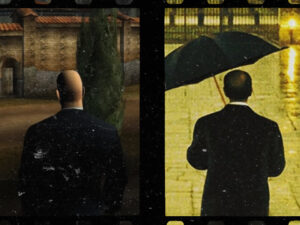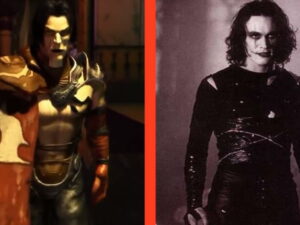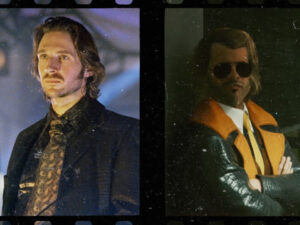Cut Scenes is Josh Wise’s regular column on the intersection between film and video games. This week, it’s The Witness vs. Lost (which is a TV series, we know).
There is a place that, for many years, I’ve longed to go back to, a place I’ve never been. I imagine that for scores of affected people, the same unreachable itch persists like the tickle of a phantom limb. In the years since I left that place, my yearning visits me now and again, captured in desperate words by the manic Dr Shephard: “We have to go back.”
I am of course speaking of The Island. And if you’ve watched Lost, particularly as it was airing, it was difficult not to get swept up in the riptide of mystery and obsession that came to encapsulate not just the show itself, not just those that watched it, but the island at its heart.
Time spent in Jonathan Blow’s second independent outing, The Witness, has brought to the fore my intense longing to return. Its island, filled with puzzles and awe, is in kinship with the one J.J. Abrams created over a decade ago now. At first it was a general tropical haze, one that could have been felt playing Far Cry 3 or Dead Island. After a time, though, something more potent began to take hold. It was crystallised in a single moment.
In the third episode of Lost‘s second season, ‘Orientation’, Jack Shephard and John Locke, the Man of Science and the Man of Faith, sit down together to watch a film. It was a moment of complete surreality. Events on the island had corkscrewed down, tapping into a vein of mysticism – odd columns of smoke, impossibly large birds, the ruins of an 18th century slave ship nestled in the jungle – but nothing quite like this.
In this film, beamed onto a slide from an old-fashioned projector, a scientist by the name of Dr Marvin Candle opaquely explains some of what is happening on the island. Much of his explanation comes by way of instruction relating to the apparatus in the hatch, but through his direct gaze at the camera, and his broad embrace of different scientific concepts, much can be gleaned about The Island, and the mythology of the outside world.
Discovered by the survivors, half-hidden beneath the bracken, the hatch, with its geodesic dome and its Apple II computer, had impinged on the island’s natural mystique, unearthing the clandestine human presence under the jungle canopy. With the orientation film, a moment of transcendent detachment took root; you can see it on their faces as they watch:

Blow’s island is different to Abrams’s: aside from the wildly varied climes, it’s dominated by technology and the architecture of humanity. Its most natural areas are cast in the penumbra of the man-made – camouflaged speaker boxes in the jungle, exposed wiring running under soil and through rocks, steel and glass and plastic growing like weeds from the earth.
If they faked the moon landing, walking The Witness’s strata is like wandering the set after the crew has gone home. It’s suffused with the suggestion of the synthetic, its beauty hermetically sealed. It’s a place where even the most picayune details are cause for prickling suspicion, not least for the secrets they might yield, but for their seeming artificiality. Up close, rocks, leaves, wood, and metal all yield the same texture: softly mottled and smooth like coloured icing on a cake.
Just like Lost’s mythology was splintered and strewn through its dense maquis, The Witness uses these signs of human contrivance to lead you step-by-step to a moment of revelation. Near where you begin the game there is a locked room. The hatch-like bunker, its reinforced door set into the grassy decline of a hill, reveals a clue; this clue triggers a very similar moment of elevated revelation, as a film begins to play…
The face of Science Historian James Burke dominates the screen. His musings on the nature of truth, its reflections in science, art, and philosophy, and on the nature of connection, was an epiphany in itself. Comparing a printed slide of amino acids to the pages of a book splashed with European art and history, Burke talks staring straight into the camera towards you. In a single difficult moment, much is revealed about the nature of The Witness, of its island, and of life outside it.
Lost‘s island, with its enclosed separation from the rest of the world, holds the secrets to a greater understanding of that beyond its shores. The orientation film, with its images of electromagnetism, zoology, and psychology, completely breaks free of the island, and casts its inquisitive gaze outward.
The Witness‘s central idea, the oneness of everything made knowable through epiphany, is one that is too big to be contained by the sea. It’s ironic that these moments of escape come in cocooned scenes of surrender: of being quiet in a dark, closed room, bathed in the light of a screen, trapped and free.












